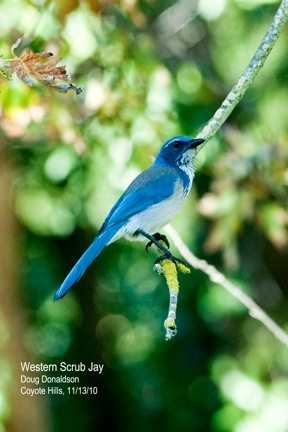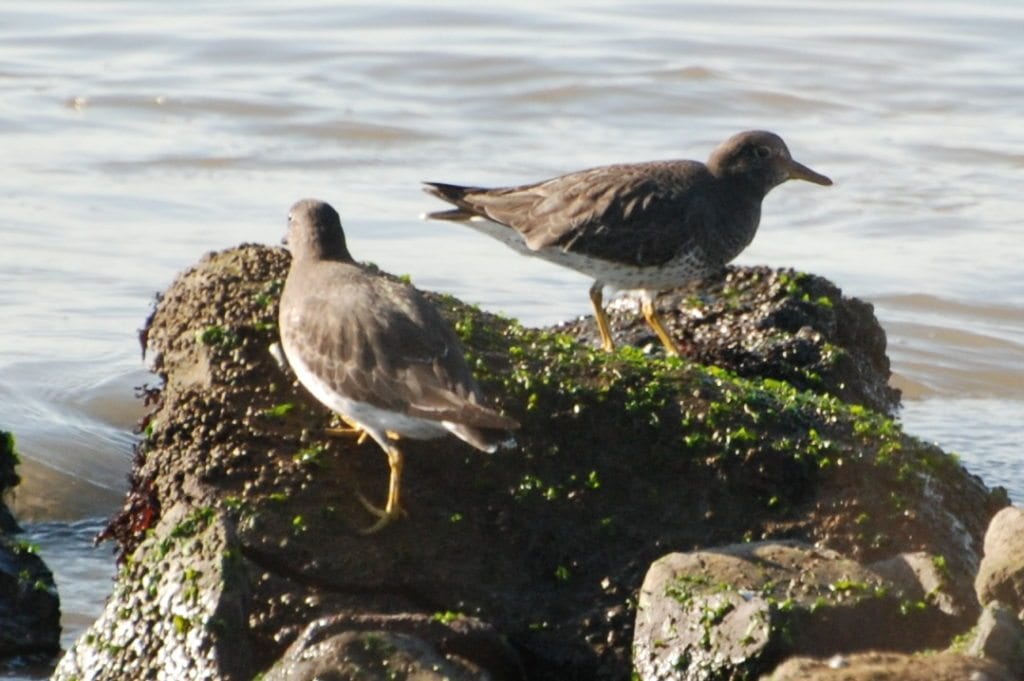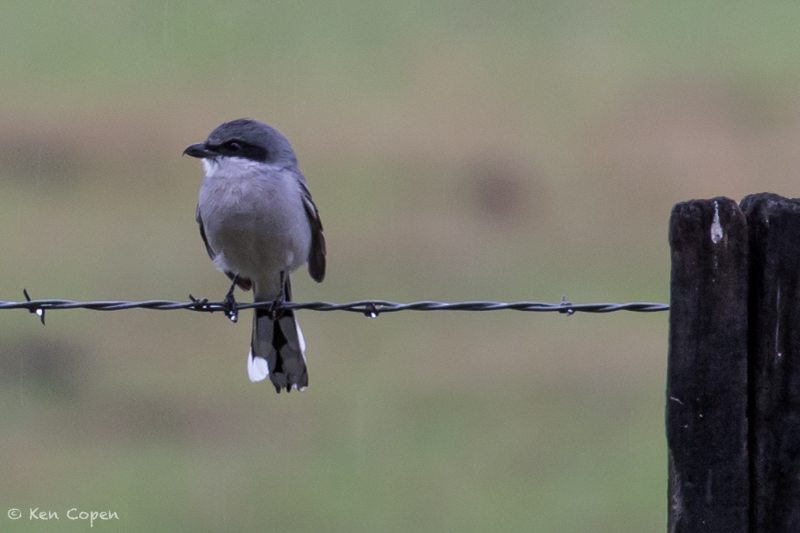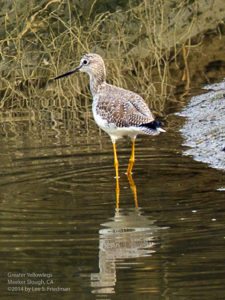Teaching Birding to Beginners
By Anne Hoff
“Oh, it’s beautiful!,” says the forty-something human, awestruck by the California Scrub-Jay.
“I see it! I see it!’” says the white-haired, cane-wielding human, looking at a Green Heron at Lake Merritt.
“There goes my free time,” moans a Millennial in the back row upon being introduced to the Cornell Lab of Ornithology website.
I love teaching my Beginning Birdwatching and Advanced Beginning Birding classes for Golden Gate Bird Alliance. My students get so turned on about the littlest things — like a handful of Bushtits — that field trips just fly by. On one recent trip to Las Gallinas, a pair of Northern Harriers and two White-tailed Kites flew over the marsh just to show off for us. Okay, yes, they were hunting, but it was a treat for us to see them.

I am thankful to finally have a classroom that really darkens sufficiently to see the bird slides in my Powerpoint. The Ed Roberts Campus in Berkeley provides a central location next to BART for Golden Gate Bird Alliance to hold our classes. And field trip locations have never been a problem: Because the Bay Area has an almost unlimited array of great birding sites, I can choose different ones to highlight the birds of each season and to avoid inconveniently narrow trails. It’s much easier to work with a group if we’re on a fire road because everyone has a chance to see the bird we’re studying. I also try conscientiously to pick sites where the birds will be closer than a half mile away. A lot closer! We spend much of our field trip time by water, because, well, that’s where the birds are. East Bay Regional Parks, Las Gallinas Valley Sanitation District (otherwise known as sewer ponds), and EBMUD lands provide a wide variety of habitats.

Beginners always make me re-think things and ask thoughtful questions. Like binoculars. Just when I think I have fully listed the characteristics of good binoculars, someone comes along with their father’s World War 2 bins. They are fixed focus. That’s right, they are permanently focused at infinity, like looking for ships on the horizon. There’s no focus wheel. “Nope, can’t use these for birding…”
Then there was the pair that didn’t have a firm axis, so every time they were lowered, the distance between the eyes changed, and then had to be adjusted each time the bins were raised to hopefully spot a bird. And of course there is the occasional pair that seem to consistently be giving the user a headache. “Let me just look through those…Ah yes, this is what I mean by being out of alignment. See the double image?”
Just the other day, someone brought me two pair of binoculars. One was out of alignment. The other was so dusty that you could see the dust on the various layers of glass inside the barrels. People hate to throw away good 60-year old bins.

At least one person per class is really there for the photo ops. Sometimes they don’t even carry binoculars, just a camera. And then I get emails with professional (OK, some not so) -looking photos of the birds we actually saw and can share with the following class. “This is our Northern Pintail!”
In my presentations, I use photos I’ve taken myself, some from friends (notably Bob Lewis), and some from the web. Email is wonderful because students can use it to ask me questions and I can send them an eBird list of all the species we saw on each field trip. (Then they can email me back to point out the species I forgot.)
In response to popular demand from folks who have taken the beginning class a couple of times, I developed an Advanced Beginners class. NOT an Advanced class!! Where did I come up with that name? Remember Red Cross swimming lessons? Back when I took them, the level after beginners was advanced beginners. I like being able to help people take the next step into birding. And in the Advanced Beginning class, I don’t have to talk much about binoculars. The field trips are farther afield and see a wider variety of birds. Time to teach this second class comes courtesy of my retirement from my career as a nurse.

For quite a few years, I got away with talking about only paper field guides (aka “books”). About two years ago, some students — those Millennials again — shamed me into buying an app for my newly-acquired first smartphone. My Beginners classes now get to see two slides about apps. I’ll probably need to add another soon because apps are multiplying like… Canada Geese.
Today I went to a walk featuring lichens. So much new vocabulary that my head was swimming! It makes me even more sympathetic with the newbies who are struggling with dabblers and divers, patagial markings, and falcons vs. hawks! Ravens vs. crows! Lesser vs. American Goldfinches!
I was in their shoes in 1998 when I started serious birding. There is so much to learn and enjoy. Hopefully, students leave my classes with a few more tools to enable their new… hobby. Or perhaps… addiction?
Anne Hoff is offering both an evening and a daytime session of Beginning Birding this winter. The evening session starts on Monday, February 27 and includes five Monday evening classroom sessions and five Saturday morning field trips. The daytime session starts on Tuesday, February 28, and includes five Tuesday morning classroom sessions and five Tuesday afternoon field trips.
Anne’s next Advanced Beginning Birding class starts on Wednesday March 1, and includes five Wednesday evening classroom sessions and five Sunday morning field trips. Details and registration for all classes are on our Classes web page.
